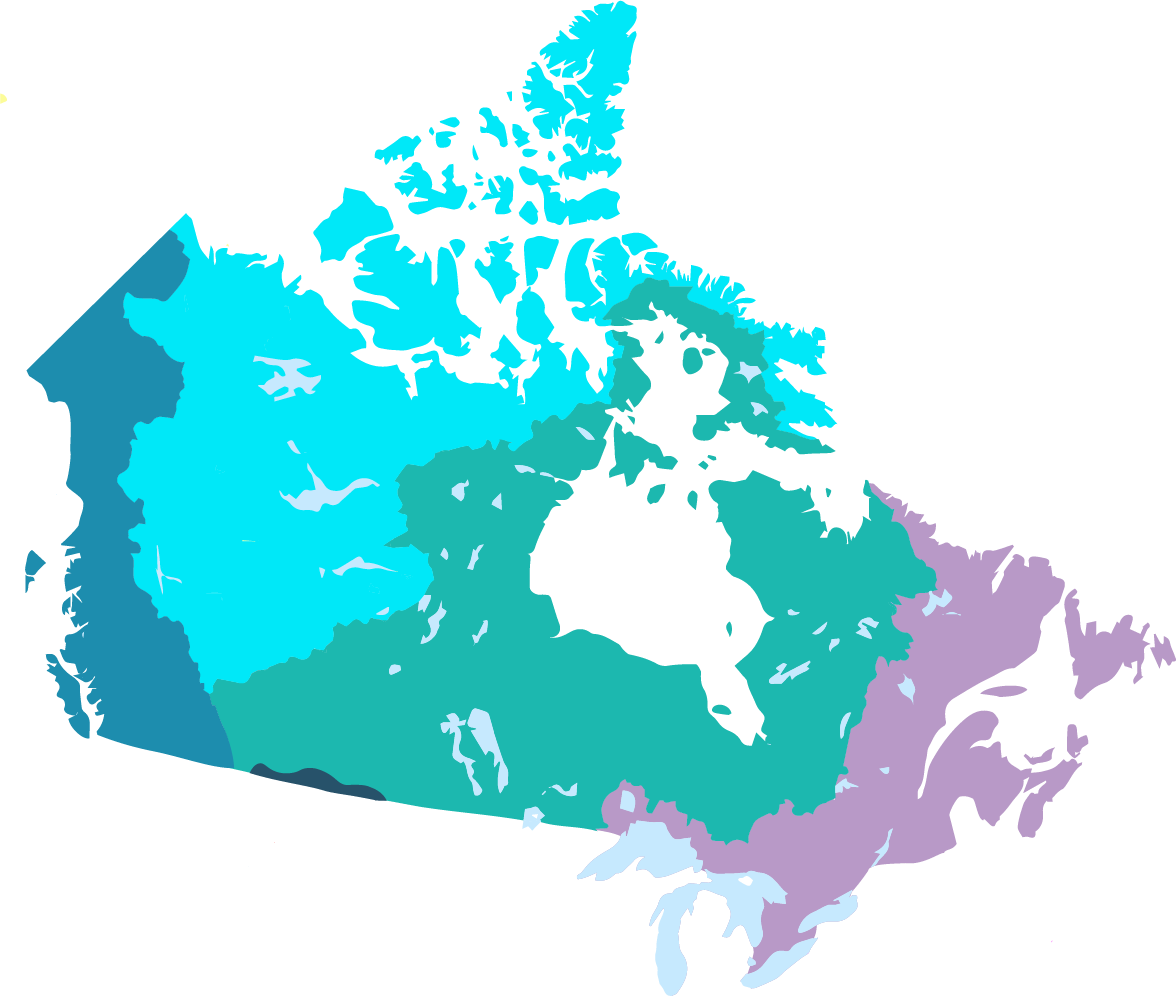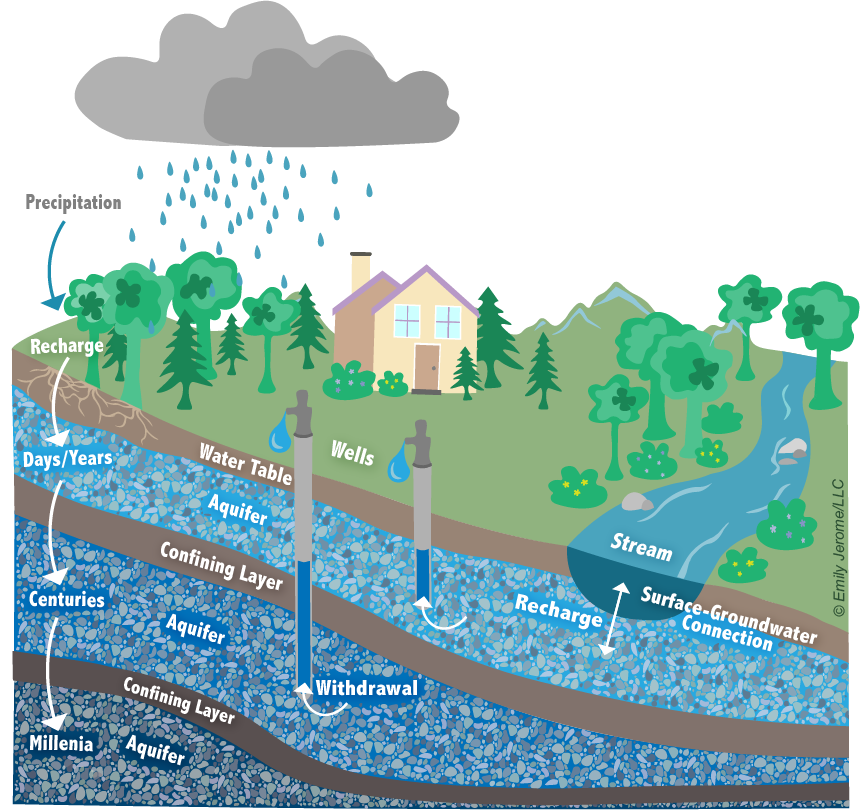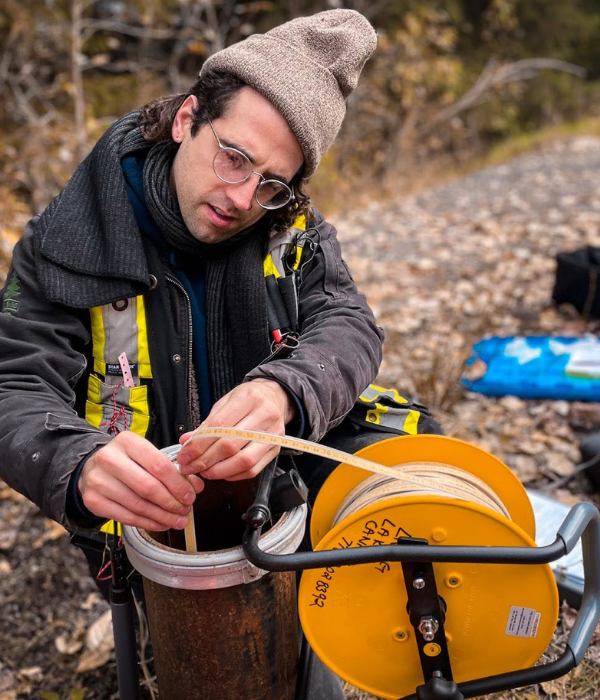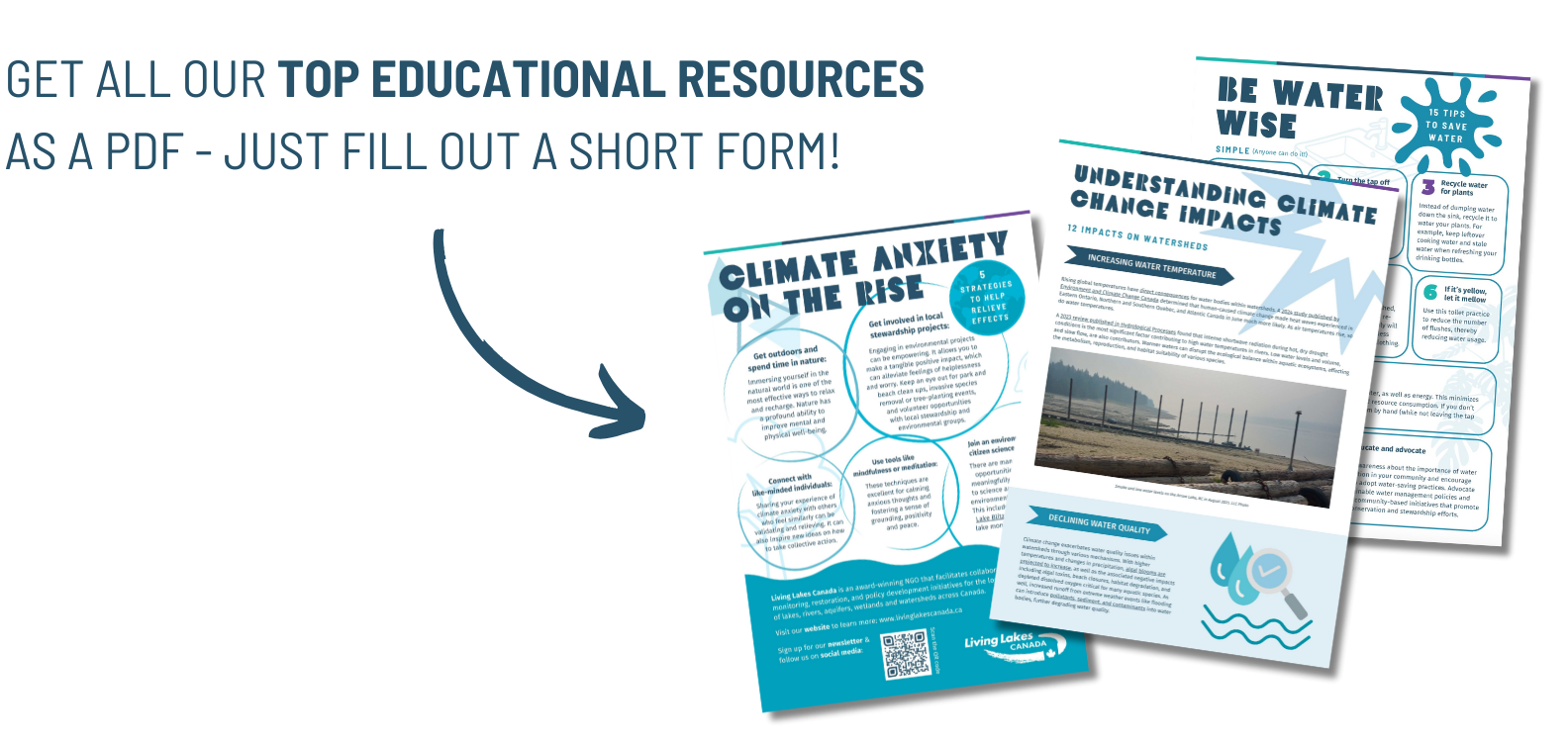Groundwater 101
Understanding Groundwater and Why it Matters
When you think of fresh water sources, you may picture rivers, lakes, and wetlands. But beneath our feet lies a hidden yet vital source of freshwater: groundwater. It quietly sustains surface water levels, and supports ecosystems and communities. Let’s learn about what groundwater is, why it matters, and the challenges it faces in a changing climate.

But First…What is a Watershed?
A watershed is an area of land where all rain, snowmelt, and streams drain into the same water body, such as a river or lake. Think of it as a natural funnel that collects and channels water.
Canada has five major drainage basins that flow to different oceans. Within these are 11 watersheds, further divided into 164 subwatersheds. What happens in one watershed, such as drought or pollution, can affect those downstream. But neighbouring watersheds may remain unaffected if they aren’t directly connected.
Groundwater is a key piece of the watershed puzzle. Let’s take a closer look below the surface…
What is Groundwater?
Groundwater is freshwater found underground in spaces between rock, sand, and gravel. It’s stored in aquifers, natural underground layers that can hold and/or move freshwater.
Some aquifers are connected to lakes, rivers, and wetlands, while others are more isolated. Aquifers are recharged by rain, snowmelt, and surface water that slowly soaks into the ground. Some refill in months, while others can take centuries.
Why Groundwater Matters
Groundwater is essential for communities for many reasons:
- It supplies drinking water and supports farming, industry, and daily life.
- It sustains healthy ecosystems, providing vital water for plants, fish, waterfowl, and wildlife.
- It is connected to surface water, helping to maintain the flow and levels of rivers, lakes, and wetlands.

Groundwater Challenges
Groundwater is essential, but it faces significant challenges including:
- Overuse: Groundwater is a limited resource that takes time to recharge. Overuse can deplete aquifers, and lead to water shortages and permanent damage.
- Growing Demand: As freshwater demand increases, careful management and allocation is necessary to ensure reliable access for all.
- Climate Change: With climate change making surface water sources more unreliable, aquifers are under greater pressure to support both communities and ecosystems.
Because groundwater is hidden from view, it’s crucial to expand monitoring efforts to better understand this critical freshwater source and ensure its sustainable management for future generations.

Know Your Terms:
- Aquifer: An underground layer of rock or soil that stores water and allows it to flow.
- Allocation: The method of determining how groundwater is shared among people, industries, and communities.
- Confining Layer: A layer of rock or sediment, such as clay or shale, that slows or prevents the movement of groundwater.
- Depletion: Occurs when groundwater is used faster than it can naturally recharge, leading to a drop in groundwater levels.
- Recharge: The process by which rain or snowmelt replenishes underground water supplies.
- Watershed: An area of land where all water drains into a common water body, like a river, lake, or ocean.
- Water Table: The level below the surface where the ground is fully saturated with water.
Groundwater monitoring at a Volunteer Observation Well located at Selkirk College. LLC Photo
SIGN UP for Living Lakes Canada’s newsletter to stay in the flow of water news and get involved in the protection of lakes, rivers, wetlands and watersheds.
Learn more about our water science and stewardship
The Columbia Basin Groundwater Monitoring Program and Alberta Groundwater Program aim to increase knowledge about groundwater sources through collecting and sharing groundwater level data from Volunteer Observation Wells.
The National Lake Blitz is an annual volunteer citizen science program with the goal of encouraging the widespread monitoring of lakes across Canada by providing accessible tools and support.


